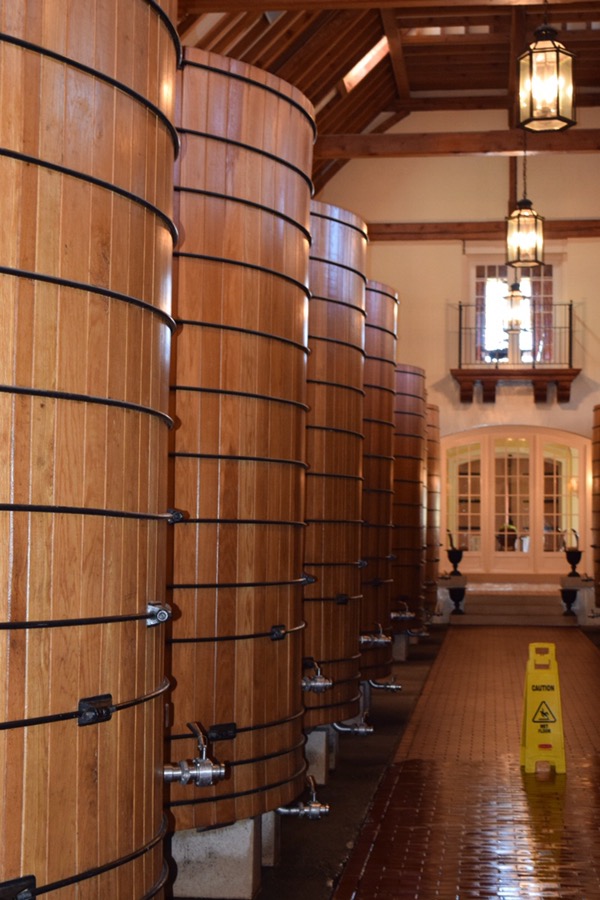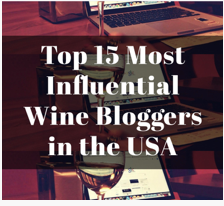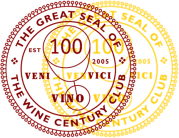By just about any rational standard, Jordan Winery should not exist. I don’t mean that in a mean way whatsoever, I am just trying to look at it objectively. As I drove up the winding road to the winery, I tried to imagine starting a winery following the Jordan model today.

Despite my suave, debonair demeanor and my impeccable sense of style, it may surprise you that I am not an independently wealthy man. So, I imagine, if I were to ever want to start a winery, that would require multiple meetings with several investors to tell them about my plan. What would be that plan according to the Jordan model? Simple: make one red wine and one white wine.
And that’s it.
No plans to ever expand the line or diversify the offerings.
Just one red and one white. Period.
What would those investors say? Might they have any suggestions based on, I don’t know, just about every other winery in the stinking country?
Imagine if Ford only made two different model cars, Nike only had one running shoe and one basketball shoe, or you could only get a Double-Double and fries at In and Out Burger.
(OK, truth be told, originally Henry Ford only had one car that you could get in any color as long as it was black, and things worked out well for him [discounting the whole anti-Semitism thing], and I only order a Double-Double with fries at In-and-Out anyway, so thus a bad example, but anytime you can get the words “animal style” into an article, you are ahead of the game.)
My point is, after that slight detour, that the Jordan approach just does not make much sense at all in today’s diversified wine world.
Until you taste the wines.
I will get back to the wines a bit later, but first, a little background:
Tom and Sally Jordan founded their eponymous winery in 1972, and decided to concentrate on a single wine, modeled after the approach of the prestigious first-growth wineries in Bordeaux. They planted Cabernet Sauvignon and Merlot that first year and hired André Tchelistcheff as their winemaking consultant, who, in turn, hired Rob Davis as the inaugural winemaker in 1976, and Rob Davis has been at Jordan ever since.
The Jordans added their white wine to the mix, planting Chardonnay on the estate in 1977, with the desire to make a Burgundian style wine to accompany their Bordeaux style red. Eventually, Rob Davis, deciding that the Alexander Valley was just too warm to produce the quality of Chardonnay required, started sourcing fruit from the Russian River Valley in the 1990s, and the Jordan Chardonnay officially changed appellations in 2000.

The large oak barrel room.
The footprint of the 58,000 square foot winery, designed and built in those first few years to equally house both the winemaking and hospitality needs of the winery, has remained unchanged, a testament to the foresight of both the Jordans and André Tchelistcheff.
John Jordan took over as CEO of the company in 2005, determined to transform the 1,200 acre estate into a model of sustainability in the county. His efforts, by all accounts have been impressive, as the property has received numerous green business certifications during his tenure at the helm.

The grounds at the estate are vast and stunning.
Now, back to the wines. The story of Jordan Winery, while compelling, would frankly not be told all that much if the quality of the wines produced were not at least as impressive as the story itself. Even though I only tasted a trio of wines during my two-hour plus visit to the estate, those three underscored what many investors today would likely overlook:
Quality trumps variety.
Every time.
 2014 Jordan Chardonnay Russian River Valley: Retail $32. Fermented in 60% stainless steel and 40% new French oak with only 30% going through malolactic fermentation, then aged for 5 1/2 months in new French oak. A wonderful nose of lemon curd and vanilla. On the palate, just delightful. Great balance and verve. Outstanding. 92-94 Points.
2014 Jordan Chardonnay Russian River Valley: Retail $32. Fermented in 60% stainless steel and 40% new French oak with only 30% going through malolactic fermentation, then aged for 5 1/2 months in new French oak. A wonderful nose of lemon curd and vanilla. On the palate, just delightful. Great balance and verve. Outstanding. 92-94 Points.
2008 Jordan Cabernet Sauvignon Alexander Valley: Retail $65. 77% Cabernet Sauvignon, 18% Merlot 5% Petit Verdot. 76% French, 24% American oak barrels, 31% new (60% French, 40% American). Decanted for an hour. Shy dark red berry fruit and ground black pepper. Bordeaux style. Not opulent by any means but rich fruit and still dusty tannins. Not going anywhere anytime soon. Outstanding. 92-94 Points.

2012 Jordan Cabernet Sauvignon Alexander Valley: Retail $55. 77% Cabernet Sauvignon, 16% Merlot, 5% Petit Verdot, 2% Malbec. 69% French, 31% American oak barrels for 12 months, 41% new oak (73% French, 27% American). Not as much dark fruit as the ’08 but still plenty of cherry and blackberry fruit with a bit of greenness. This still needs a bit of time, but this is a gem in the making. Outstanding. 91-93 Points.








And exactly where is this said anomaly of a winery? Or is that a secret?
LikeLiked by 1 person
Sonoma County!
LikeLiked by 1 person
“Suave and debonair”? I think you have been hitting the Two Buck Chuck kind of heavy.
LikeLiked by 1 person
I never claimed to be accurate or truthful!
LikeLiked by 1 person
Another great post!
LikeLiked by 1 person
Thanks Mimi, you’re the best!
LikeLiked by 1 person